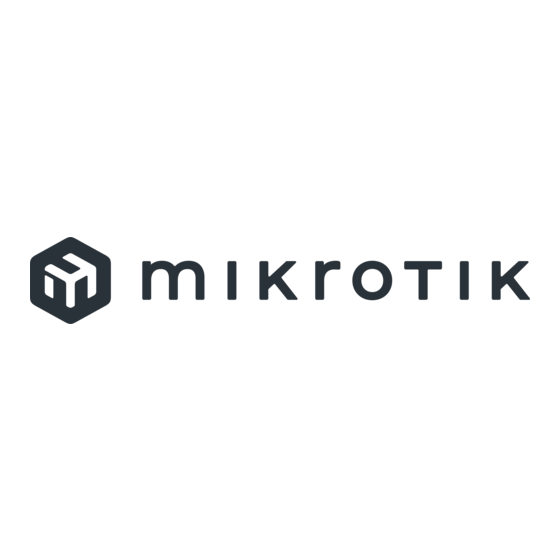
Table of Contents
Advertisement
Quick Links
RouterBOARD 111/112
Quick Setup Guide and Warranty Information
Board Build Versions
●
RB112 – complete build with two MiniPCI
●
RB111 – only one (top) MiniPCI slot
Assembling the Hardware
First to use the board:
●
Insert the MiniPCI cards. There are two MiniPCI sockets on
both sides of the RB112 build, and only one top connector
on the RB111 build.
●
In case it is planned to power the board up from a
standard 48V DC PoE injector (note that the RouterBOARD
does not support power over datalines), the JP2 jumper
should be opened.
●
Install the board in a case and connect other peripherals
and cables.
●
Plug in power cable to turn on the board.
Powering
The board accepts 11..60 V DC from either power jack or Ethernet port:
●
direct-input power jack J7 – 5.5mm outside and 2mm inside diameter, female, pin positive plug.
●
PoE compliant with IEEE802.3af Power over Ethernet standard (except for no power over datalines is supported),
which also accepts a wide range of non-standard input voltages. IEEE802.3af PoE controller is only operational
starting from 22-24V DC, so the JP2 jumper should only be opened when powering from high-voltage standard-
compliant PoE injector. Note that the JP2 jumper position applies for both the power jack and PoE input.
The maximal output of the power supply is normally 3.0A, but the efficiency is decreased on lower voltages, so it is about 2-
2.5A when powered from 12V DC.
Booting process
First, RouterBOOT loader is started. It displays some useful information on the onboard RS232C asynchronous serial port.
The serial port is set to 115200bit/s, 8 data bits, 1 stop bit, no parity by default. Note that the device does not fully
implement the hardware (RTS/CTS) flow control, so it is suggested to try to disable hardware flow control in the terminal
emulation program in case the serial console does not work as expected, and if it does not help, make a new cable using the
pinout given in the User's manual. The loader may be configured to boot the system from the onboard NAND, and/or from
network. See the respective section of User's manual on how to configure booting sequence and other BIOS parameters.
DHCP or BOOTP (configurable in loader) protocols allow the RouterBOARD 500 series computer to get an initial IP address,
and provide the address of a TFTP server to download an ELF boot image from. It is especially useful for software installation
purpose. See the User's manual for more information and protocol details. Note that you must connect the RouterBOARD you
want to boot and the BOOTP/DHCP and TFTP servers to the same broadcast domain (i.e., there must not be any routers
between them).
See
www.routerboard.com
for more information. Contact
support@mikrotik.com
for support questions.
rev. A (3-Feb-2006)
Advertisement
Table of Contents

Summary of Contents for MikroTik RouterBOARD 111
- Page 1 RouterBOARD 111/112 Quick Setup Guide and Warranty Information Board Build Versions ● RB112 – complete build with two MiniPCI ● RB111 – only one (top) MiniPCI slot Assembling the Hardware First to use the board: ● Insert the MiniPCI cards. There are two MiniPCI sockets on both sides of the RB112 build, and only one top connector on the RB111 build.
- Page 2 No part of it may be reproduced or transmitted in any form without prior written permission from the copyright holder. RouterBOARD, RouterOS, RouterBOOT and MikroTik are trademarks of MikroTikls SIA. All trademarks and registered trademarks appearing in this manual are the property of their respective holders.







Need help?
Do you have a question about the RouterBOARD 111 and is the answer not in the manual?
Questions and answers